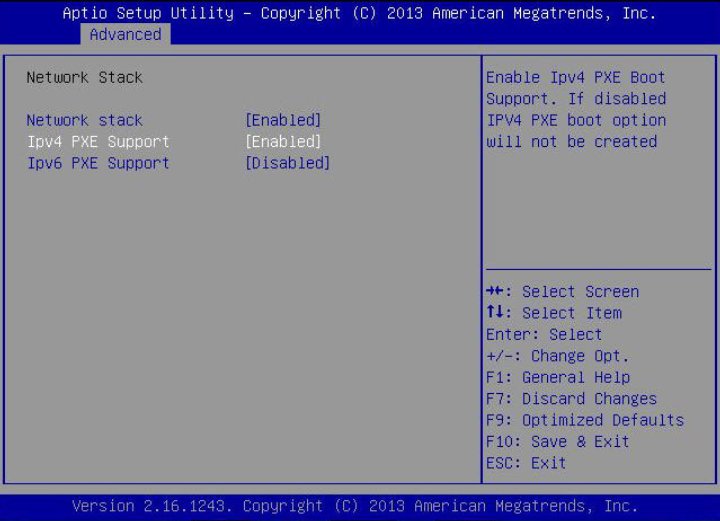Install Windows Server 2012 or 2012 R2 Using PXE Network Boot
This section explains the initial information you will need and provides the instructions you need to follow to install the Windows Server 2012 or 2012 R2 operating system over an established PXE-based network using a customer-provided Windows Imaging Format (WIM) image.
Note - This task documents the initial steps to install Windows Server over the network using Windows Deployment Services (WDS). Specifically, it explains the steps for selecting the PXE network adapter card that will communicate with your WDS installation server. For further information about using WDS to install Windows Server 2012 or 2012 R2, refer to Microsoft's Windows Deployment Services documentation.
Before You Begin
To use WDS to perform the installation, you must:
-
Add the required system device drivers to the install.wim image and, if necessary, the boot.wim image.
For instructions for adding drivers to the WIM installation image(s), see the Microsoft Windows Deployment Services, and Windows Assessment and Deployment Kit documentation.
-
Obtain a WDS user account and password to authenticate to the PXE service.
-
Ensure Windows WDS is properly configured and the Windows Server 2012 and
2012 R2 WIM images are ready for PXE installations.
Ensure that the PXE network environment is properly set up and the Windows installation media is available for PXE boot.
-
Reset the server.
For example, to reset the server:
-
From the local server, press the Power button (approximately 1 second) on the front panel of the server to power off the server, then press the Power button again to power on the server.
-
From the Oracle ILOM web interface, click Host Management → Power Control, select Reset from the Select Action list box, then click Save.
-
From the Oracle ILOM CLI, type: reset /System
The server begins the boot process and the BIOS screen appears in the Oracle ILOM Remote System Console Plus application.

Note - The next event occurs very quickly; therefore, focused attention is needed for the following steps. Watch carefully for these messages as they appear on the screen for a brief time. You might want to enlarge the size of your screen to eliminate scroll bars. -
-
To verify PXE boot support is enabled, perform the following steps:
Note - PXE boot support is enabled by default; however, this step directs you to verify that PXE boot is enabled in the event that it was disabled. Once you have verified that PXE boot support is enabled, you can omit this step on subsequent PXE boots.-
Press the F2 key to access the BIOS Setup Utility.
The BIOS Setup Utility appears.
-
Select Advanced in the top menu bar.
The BIOS Setup Utility Advanced screen appears.
-
Select Network Stack from the list of available options.
The BIOS Setup Utility Network Stack screen appears.

- If necessary, set the appropriate PXE Support setting (either IPv4 or IPv6) to Enabled.
-
To save the changes and exit the BIOS Setup Utility, press the F10
key.
The server resets. After resetting, the BIOS screen appears again.
-
Press the F2 key to access the BIOS Setup Utility.
-
In the BIOS screen, press the F8 key to specify a temporary boot device or
press F12 to network boot (PXE).
The Please Select Boot Device menu appears listing the available boot devices. The screen that appears will differ depending on whether you have BIOS configured for Legacy BIOS Boot Mode or UEFI Boot Mode.
-
For Legacy BIOS Boot Mode, a screen similar to the following appears:

-
For UEFI Boot Mode, a screen similar to the following appears:

Note - The boot device menu that appears in your installation might differ depending on the type of disk controller installed in your server.For UEFI boot mode, both IPv4 and IPv6 protocols are selectable for each network adapter interface, in addition to local and remote boot devices.
-
-
In the Please Select Boot Device menu, select the server network adapter
that is configured to communicate with your PXE network install server.
The network bootloader loads and a boot prompt appears. After a few seconds the installation kernel will begin to load.
- To complete the installation, refer to Step 5 of Install Windows Server 2012 or 2012 R2 Manually Using Local or Remote Media.